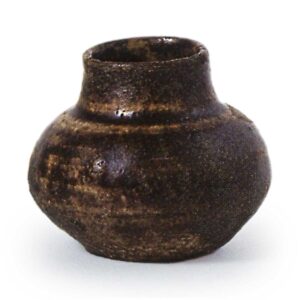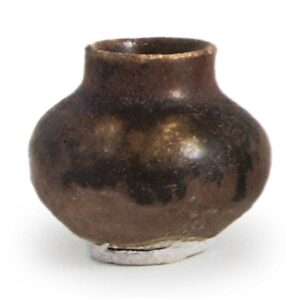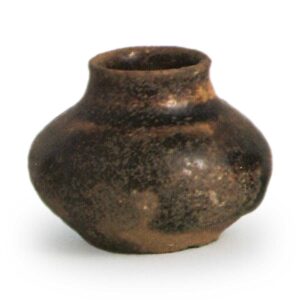


From around the end of the Kamakura period, various kilns in the Seto region began to produce small iron-glazed wares using so-called grandmother clay. The earliest example of this is the Okiagari kiln, from which a large base with the inscription “1324” was excavated, but production gradually increased, with some kilns firing large quantities from the late 14th century. These iron-glazed small pots are also called mameharu in Seto. It is easy to assume that these azuki or mame were made as tea containers, since tenmoku tea bowls began to be fired at the same time. It is clear that these small jars were made from imported items that were respected as Chinese-made tea containers at the time, and many of them are known to be similar to the various forms of matcha chun described in the “Kuntai kanjo-chouki” and other sources. In particular, many of the early small vessels are of the form called “maru-nasu” or “rotei”. These types of vessels eventually developed into the Japanese tea caddies of the 15th century, mainly made by Jyuku Daumi.



